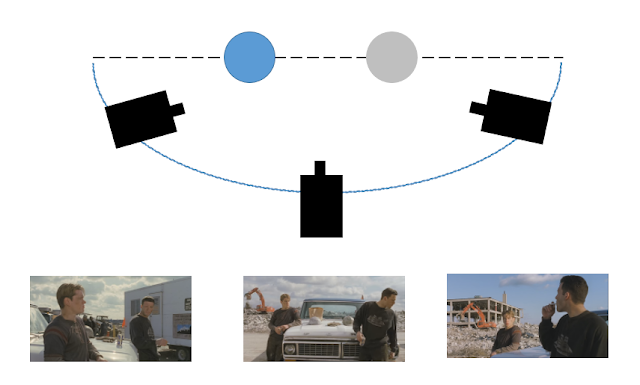MOMENTS,
BEGINNINGS, MIDDLES AND ENDINGS
(Monday 10th October)
(Monday 10th October)
- Plot - What happens
- Story - The significance of what happens
Stories
should not be = EVENT – THEN – EVENT – AND THEN
Stories
should be = EVENT – THEREFORE – EVENT – BUT - EVENT
A story also needs significant and memorable moments to make an effective screenplay. These need to be memorable points that YOU believe in.
CROSSING THE LINE
The 180˚ Rule
is a technique used by filmmakers when positioning their audience within a
scene. A hypothetical line is drawn across the action, allowing the camera to
be positioned in an invisible arc on one side of this line, not crossing it. By
using this rule, for example in conversation with two characters, the
characters stay on their retrospective sides of the screen – avoiding confusion
and disorientation for an audience.
For example:
However, this rule can be broken through moving shots,
such as tracking and panning. Some directors choose to intentionally break this
rule in order to convey a feeling of disorientation, or a change of
perspective. For example, in The Shinning
(1980), Stanley Kubrick crosses the line while Johnny is hallucinating in order
to disorientate and confuse the viewer – emphasising the character’s decent
into madness:

No comments:
Post a Comment